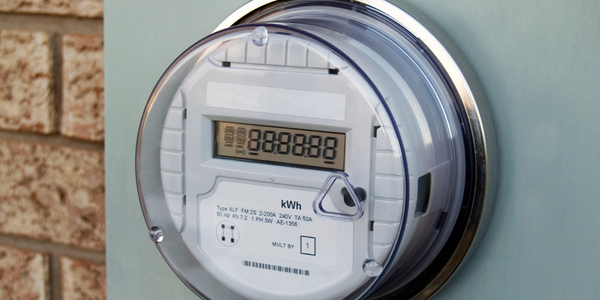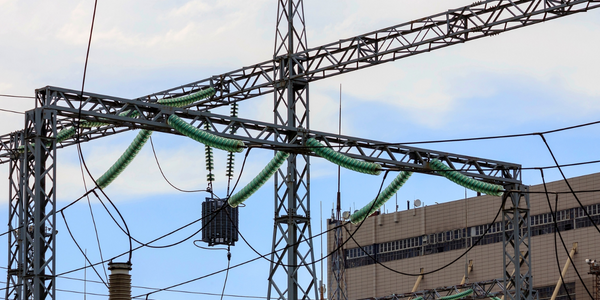Technology Category
- Networks & Connectivity - LoRa
- Networks & Connectivity - Low-Power Wide-Area Network
Applicable Industries
- Electrical Grids
- Telecommunications
Applicable Functions
- Product Research & Development
- Quality Assurance
Use Cases
- Time Sensitive Networking
Services
- System Integration
About The Customer
VIA Telecom is a leading fabless semiconductor company that specializes in developing low-power code division multiple access (CDMA) baseband processors for mobile applications. The company's latest single-chip CDMA baseband processors support a range of dual-mode technologies, including CDMA2000, 1xEVDO, and CDMA2000/GSM. To support its global customer base of handset makers, VIA Telecom maintains International Design Centers around the world. Handsets based on the company’s processors can be found in products in more than 20 countries around the world. Frank Hsu, an ASIC design manager at the company, oversees the methodology for delivering netlists to the back-end team, as well as the timing closure and production test processes.
The Challenge
VIA Telecom, a leading fabless semiconductor company, was facing a significant challenge in delivering low-power baseband processors in a highly competitive market. The company's customers, primarily handset manufacturers, were under increasing pressure to deliver unique mobile devices with low power consumption and long battery life. These customers were also facing shortened design cycles due to time-to-market demands. To keep pace with its customers, VIA Telecom needed to move away from its manual process for verifying the power intent of its digital baseband processor designs. The company was seeking a proven solution with strong support to automate this process and maintain low power consumption while ensuring timely delivery of their products.
The Solution
VIA Telecom turned to Cadence for a solution. The company implemented Cadence Encounter Conformal Low Power, which enabled the engineers to create and validate power intent in the context of their design. This tool merges low-power equivalence checking with structural and functional checks, enabling full-chip verification of power-efficient designs. VIA Telecom also used Cadence Encounter Digital Implementation System for physical implementation of its design and Cadence Encounter RTL Compiler for top-down global register-transfer level (RTL) design synthesis. Additionally, the company used Cadence Incisive Enterprise Simulator for automated testbench creation, low-power and metric-driven verification, and mixed-signal verification. Support from local Cadence applications engineers helped the team adapt the new flow into their legacy process smoothly and efficiently.
Operational Impact
Quantitative Benefit

Case Study missing?
Start adding your own!
Register with your work email and create a new case study profile for your business.
Related Case Studies.

Case Study
Hydro One Leads the Way In Smart Meter Development
In 2010, Ontario’s energy board mandated that time-of-use (TOU) pricing for consumers be available for all consumers on a regulated price plan. To meet this requirement, Hydro One needed to quickly deploy a smart meter and intelligent communications network solution to meet the provincial government’s requirement at a low cost. The network needed to cover Hydro One’s expansive service territory, which has a land mass twice the size of Texas, and its customers live in a mix of urban, rural, and remote areas, some places only accessible by air, rail, boat or snowmobile. Most importantly, the network needed to enable future enterprise-wide business efficiencies, modernization of distribution infrastructure and enhanced customer service. To meet these needs, Hydro One conceptualized an end-to-end solution leveraging open standards and Internet Protocols (IP) at all communication levels. The utility drew upon industry leaders like Trilliant to realize this vision.

Case Study
Selling more with Whirlpool
Whirlpool wanted to add connectivity to appliances and transform the company's relationship with customers. Traditionally, Whirlpool interaction with customers was limited to purchases made once every ten years. Connected washer and dryers provide exciting new features like remote management of start times and inter-machine communication.

Case Study
SAS® Analytics for IoT: Smart Grid
Companies face falling revenues, rising infrastructure costs, and increasing risk of outages caused by inconsistent energy production from renewable sources. Less money is coming in as more people and organizations take steps to curb their energy use. Utilities are paying more to maintain and build infrastructure due to increasing complexity, resulting from the rising number of intermittent and variable renewable energy sources connected in the distribution grid.

Case Study
Enel Secures Italian Power Generation Network
Electric energy operators around the world are working to increase the reliability and cyber resiliency of their systems. This includes Enel, a global power company that manages and monitors the Italian power grid. This grid:• Serves 31 million customers• Has a net installed energy capacity exceeding 31 gigawatts• Includes more than 500 power generation plants,including hydroelectric, thermoelectric, and wind• Is managed and monitored by Enel 24/7/365• Is operated by Terna, the Italian Transmission System Operator (TSO)Enel is responsible for the availability of the grid’s underlying ICS and industrial network. It also manages Regional Control Centers and Interconnection Centers which connect with the TSO. The TSO manages the flow of energy to the grid plus controls and remotely regulates the power generation of power plants, increasing and decreasing power production as required. The complex system of interaction and cooperation between Enel and the TSO has strong security implications as well as operational and business challenges.

Case Study
Vodafone Hosted On AWS
Vodafone found that traffic for the applications peak during the four-month period when the international cricket season is at its height in Australia. During the 2011/2012 cricket season, 700,000 consumers downloaded the Cricket Live Australia application. Vodafone needed to be able to meet customer demand, but didn’t want to invest in additional resources that would be underutilized during cricket’s off-season.








